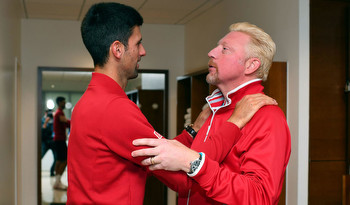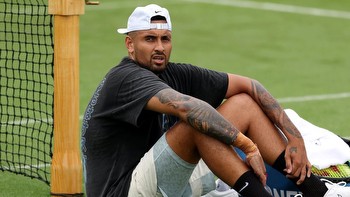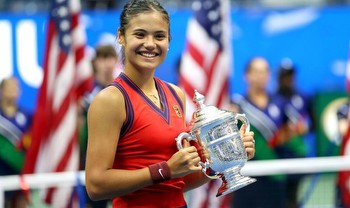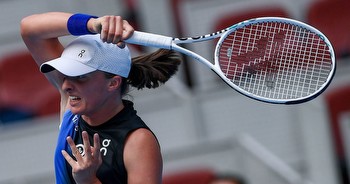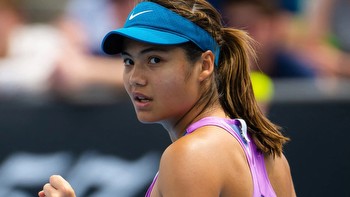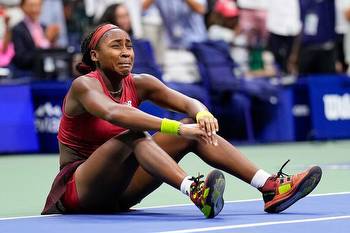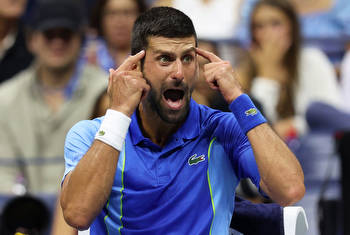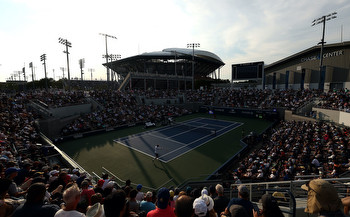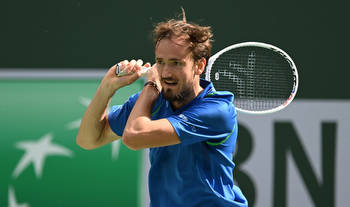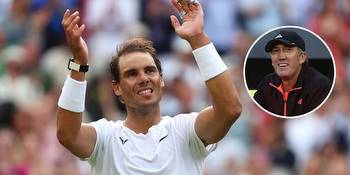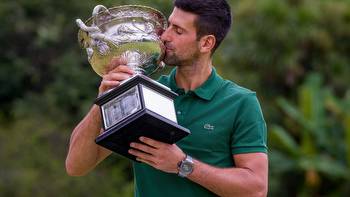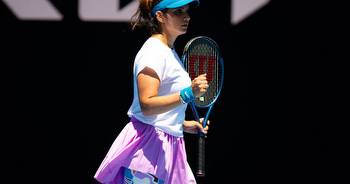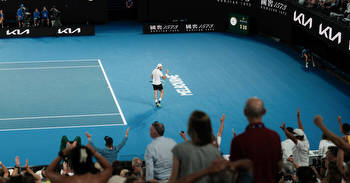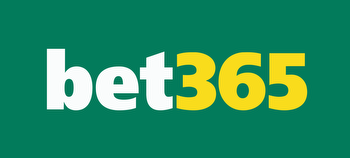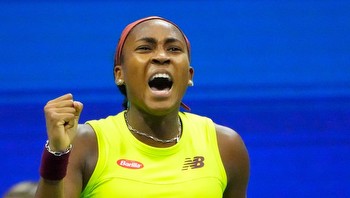Michael Chang won the French Open at 17. He reflects on Paris 1989, Asian pride and more
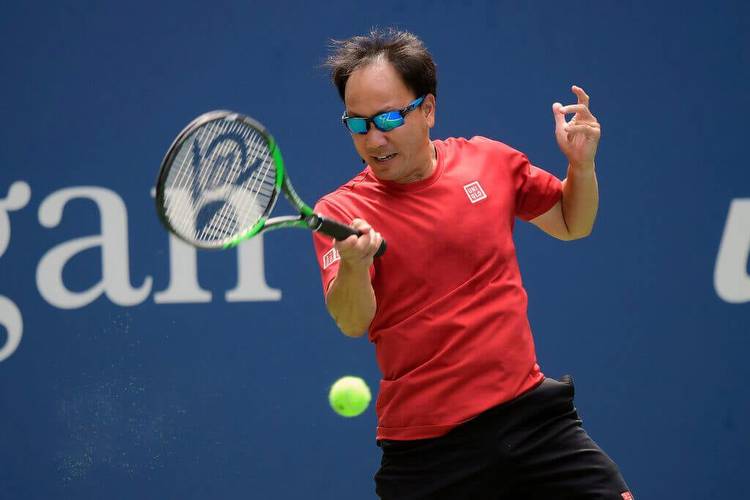
At a time where some his age were learning how to drive, Michael Chang was learning to handle success at the highest level in men’s tennis.
On June 11, 1989, Chang beat Stefan Edberg to become the youngest ever French Open champion at 17 years, 3 months and 20 days. Chang was down two sets to one but rallied to impress the Paris crowd with a 6-1, 3-6, 4-6, 6-4, 6-2 victory. Additionally, he became the first American male in 34 years to win the prestigious tournament, as well as the youngest male to win a Grand Slam singles title.
“It’s funny because I actually didn’t get my driver’s license until I was 19,” Chang said. “I was traveling so much, and I didn’t have to drive. I was flying into all these tournaments.
“To play in front of thousands of people was super exciting to me. I don’t think that ever gets boring for any professional athlete.”
Three-plus decades later, Chang’s name still resonates at Roland Garros. As a 15th seed, he not only beat the third-seeded Edberg in the final but also rallied from two sets down to upset No. 1 seed Ivan Lendl, 4-6, 4-6, 6-3, 6-3, 6-3, in the fourth round. That match holds similar weight to the result of the final for many of Chang’s fans.
Chang is a 2008 International Tennis Hall of Fame inductee. He won 34 singles titles and compiled a 120-56 Grand Slams record. He also was a 1990 Davis Cup winner.
With the main draw of the French Open set to begin Sunday, Chang said he’s keeping an eye on the talent in the men’s and women’s divisions. In an exclusive interview with The Athletic, he discussed several topics in and out of tennis, including turning pro just before his 16th birthday, playing in an era of outstanding American tennis players, the Tiananmen Square protests and massacre — which happened during his French Open run — and his current life in Orange County, Calif. With May being Asian American and Pacific Islander Heritage Month, Chang also talked about how influential his win was for Asians and Asian Americans. (His mother was born in India; his father was born in China.)
Fans want to know how you’re doing and what you’re doing. Let’s start with that.
I’ve been super busy. My kids are 12, 10 and 7, so we’re in this stage now where (wife) Amber and I, we’re shuttling the kids around for their sports. My oldest daughter plays tennis, so she’s playing a lot of high-level national tournaments. Our second daughter is playing a lot of golf tournaments. Our little boy is starting to play some tennis tournaments. You can imagine our weekends are super busy. I am still working with Kei Nishikori, but he hasn’t played since the 2021 U.S. Open. I’m just waiting for him to get healthy soon so he can get back on tour.
We have some businesses, as well as our charity foundation in Southern California. A lot of things going on … sometimes very tiring, but all in all, a ton of fun.
You moved from the East Coast to the West Coast as a child, right?
I moved very young. I was only in New Jersey (Hoboken) a short period of time. We were in St. Paul (Minn.) until I was 7, then we moved to San Diego. It was a beautiful place to play tennis and grow up. That’s where tennis really started to take off. I actually began playing in Minnesota, but San Diego’s really where it started to blossom.
Who do you credit for teaching you all you know?
I’d have to credit a lot of it to my dad. My dad is a club recreational player, but he loves the sport of tennis. I had some very good coaches in San Diego. We didn’t have a whole lot financially, so often times what would happen is my brother would take a lesson, and my dad and I would sit on the sidelines, and my dad would jot down notes. Over the next couple of weeks, my dad would reiterate (to me) all those things my brother learned in that lesson. He was the one who was really spending a majority of the time to learn the sport and take us to tournaments. He and my mom both played a great supporting role.
Tennis fans remember you as a human backboard of sorts. You seemed to return every shot. That’s a lost art to some tennis fans.
I’m not the biggest guy out there (Chang is 5-foot-9), so I’m not going to beat guys by bombing a 140 mph serve or hitting huge shots that will blow people off the court. But God gave me good movement and good heart, and I think the combination of those things was really helpful to go out and play the style I played. I think people primarily know me for retrieving a lot of balls.
I used my speed in aspects of defense, but I also used it in aspects of offense. I think in this day and age of tennis, it’s difficult to play just a pure, defensive type of tennis. It was important for me to play offensive when I had the opportunities to keep my opponents off-balance, but definitely getting the extra one or two balls back was a huge part of my game.
You won the French Open, but those who remember 1989 also remember your fourth-round match against Lendl — a five-set, come-from-behind classic. Do you feel this match helped to set your legacy? Maybe even more than the Edberg final?
I think that’s true in many aspects. I do think by winning the event after that propelled it to a different level. Lendl was seeded No. 1, Edberg was seeded No. 3. To be honest, I had no business winning either of those matches. With Lendl, I was down two sets to love and started cramping at the end of the fourth (set). With Edberg, I was down two sets to one, and I saved something like 10 or 11 break points in the fourth set, which was ridiculous. I only had one break point that I converted, and that was my set point. I’ve often told people that I feel in my heart the French Open in ’89 was one God wanted me to win.
For you personally, does your accomplishment make it that much more special knowing that you had the Asian community rooting heavily for your success?
It does, especially on the men’s side. There really hasn’t been a whole lot of (Asian) success on the men’s side. That was one of the reasons I chose to work with Kei Nishikori. I think it’s definitely getting better. Kei was able to get to a career-high No. 4 in the world (in 2015), which is great. Asian women have done pretty well. Li Na has won a couple of Grand Slams and got to the top five in the world. I would love to see more Asians do well, and there’s no reason why they can’t.
If you can recall, the situation in Tiananmen (Square) was happening during the French Open. A lot of Chinese students actually lost their lives on the middle Sunday of that French Open. My match with Lendl happened the following day. It dawned in my mind that here I am fighting for a tennis match and dealing with cramps, but in comparison to these students giving up their lives, there is no comparison. By the time the tournament was done, it dawned on me that God allowed me to win so that I could put a smile upon Chinese people’s faces around the world during a time which there wasn’t a whole lot to smile about.
If you look at today’s age of junior tennis, there are a ton of Asians playing. Whether they’re Chinese, Japanese, Vietnamese, Korean, they’re coming from a lot of different Asian backgrounds, and it’s great to see. Hopefully as the years go on, there will be more and more Asians and Asian Americans not only playing on the tour but doing well.
During your International Tennis Hall of Fame ceremony speech, you said, “When you get to playing at the top, pressures are coming from everywhere.” As a teen, what were the biggest pressures you faced?
When you’re 16 years old, you’re now full-time on the professional tour. In the beginning, there was pressure on how much I needed to make in order to break even on my expenses. In this day and age, people think when you’re on tour, you’re making a great living. The truth of the matter is, the guys who aren’t ranked 100th in the world are not making a great living. It’s really tough out there.
I didn’t have a lot of pressure as far as performance goes. Being 16, I was the underdog. I was not expected to win. Most of the pressure was actually on my opponents when I played. Post-French Open, however, all of a sudden the mentality (for them) became, “Don’t lose to a 17-year-old.” Then the mentality (for me) was, “Hey, I’ve got an opportunity to be the reigning French Open champion.” The pressure’s now on me because people are expecting me to win a lot of tournaments and a lot of matches. I started to expect myself to win every other tournament, which was unrealistic.
I also had a lot more people vying for my time, whether it was pictures, media, autographs … I had to deal with sponsors, which was positive but you had to give time to sponsors, make appearances, do commercials. That started to take time away from practices. There’s pressure coming from a lot of different ways. It took some time to find that balance of practice and training and all these other things.
You grew up with and competed against a few fellow American greats. Your plaque at the Tennis Hall of Fame induction ceremony dubbed you all the “greatest generation” of American players. Let’s do rapid-fire response with those guys, starting with Pete Sampras.
I’ve known Pete since I was 8. Pete’s an unbelievable champion. He’s very much a straight shooter as far as personality goes. He comes from a great family. He works very hard, although he’s not necessarily known for that. I think when his game really started to mature, it was after he won the U.S. Open in 1990. He became a different player, and his serve took on a whole different level. He became world-class, and that’s what propelled him to accomplish what he accomplished.
Next up: Andre Agassi.
Andre has always been very flamboyant. I’ve known Andre since I was 10. He’s very much a shot maker, an incredible talent with unbelievable hands. I think it was interesting when he first came out on tour, he did well, but his talent didn’t shine until he was able to really put in the work ethic. I think his talent brought him so far, but when he coupled his talent with all the hard work, that’s when he really started to shine and become the champion he became.
How about Jim Courier?
Jim’s a workhorse. There’s no question that his success really came about because of all the hard work he put in his game. He loves the sport, and obviously he still loves it; you can tell in the passion he has for commentating. He has great knowledge of the game. He had a huge forehand that really helped him to win so many titles, including four Grand Slams.
Here are two additional names for you: Venus and Serena Williams.
I think both are unbelievable champions out of Compton, Calif. I got a chance to watch the movie on their lives and see what (father) Richard’s done and the dedication and passion he had to introduce them to the sport of tennis. To take them through the journey they’ve been through, it’s incredible. There’s no question on the fight and passion they have for the sport, but I don’t know if there are too many other players out there that have that passion and fire they have for tennis.
They really only played a few junior tournaments when they were very young. They trained throughout their junior years … then boom, they were out playing pro tournaments and doing well, winning a lot at a very early age. That’s very uncharacteristic, but obviously, Richard knew what he was doing. It’s been great to see them so successful, individually and also as a doubles team.
Who was your toughest opponent? Could be one of them, could be someone else. And why?
That’s a tough question to answer, and I’ll tell you why. Our generation, we didn’t play just against one or two generations of players. We played against multiple generations of players. I think that’s what made our generation very special, but at the same time, I think that’s what made us very difficult.
We played against the older generation, which was Jimmy Connors, John McEnroe, Ivan Lendl. We played against the generation after that, which was Boris Becker and Stefan Edberg. And then we had our own generation, which was myself, Sampras, Agassi, Courier, (Sergi) Bruguera, (Goran) Ivanišević, (Richard) Krajicek … the generation following that one was Marat Safin, Lleyton Hewitt, Roger Federer. I just barely missed Rafa (Nadal) and Novak (Djokovic). They hadn’t gotten on tour while I was still on tour.
We’ve played against so many great generations of players and so many different styles of tennis. It’s difficult to actually pinpoint one particular player I’ve had the most difficulty playing … so many great players I’ve had great matches with, matches that I’ve won and matches that I’ve lost.
You dropped out of high school in the 10th grade and got your GED. In today’s “education is key” era, would you recommend your path to future athletes? Is there a healthy balance that you can discuss?
Whenever I am asked that kind of question, as far as training goes and as far as schooling goes, I won’t ever give the same answer to every single player. I went to college post-tennis, but there have been players to go on and have incredible careers who did play in college: Jimmy Connors is a great example. John McEnroe is a great example. You’ve got great players who went four years in college; you have great players who didn’t go to college. I’ll never say there’s one particular way.
I would always say you need to look at each individual player uniquely. You need to look at finding a balance. Education is extremely important, and what people sometimes don’t realize is education helps a lot of players find maturity in themselves, and that maturity plays an important role in a player’s tennis life.
I always tell young kids to train like you’re wanting to become one of the best in the world, but make sure you always have your education. Such a small percentage of players make it out on tour. Even for me, that was part of the reason I got my GED before I got on tour. If I didn’t make it, I knew I had education to fall back on. If you don’t put yourself in that position, I think you’re making a big mistake. Education has so many avenues for you to take, and if tennis doesn’t work out, education offers you so many more unique opportunities than putting all your eggs in one basket. If you make it, great, but if you don’t make it, what do you have to fall back on?
Tennis of today: What are your thoughts of the game?
I think tennis, on the men’s and women’s side, is going through a transition right now. Roger’s retired. Rafa hasn’t been able to play and is trying to get healthy. He’s on the tail end of his career. Novak’s still playing well, but he’s more on the tail end of his career. You’ve got this new generation of players not only looking like they are playing well and winning Grand Slams but they are here to stay. Carlos Alcaraz is leading the way. You’ve got Jannik Sinner. You’ve got a lot of young players on the tour.
On the women’s side, Serena’s no longer out there. Ash Barty was No. 1 early last year but is now retired. You’ve got a lot of new names. It’s changing. You’ve got (Iga) Świątek playing well, (Aryna) Sabalenka playing well. I think it’s going to take a little bit of time for people to get used to these new names and new faces. But it’s not difficult to watch Carlos Alcaraz play because he’s so exciting. I think tennis is in good hands for the future.
As we prepare for the French Open, what will you be looking for in particular?
Paris is a special place. I feel it’s extra special for me because of my history there.
But people who have been at the French and in other Grand Slams know the French Open tends to be one of the more emotional tournaments. It’s because of the French crowd and the way that tennis is played on clay. There’s so much art, and there’s so much chess-like strategy in the way you’re playing and conducting points and trying to figure out how to get by people’s strengths and exploit their weaknesses. It’s a much different game than some of the other faster surfaces.








